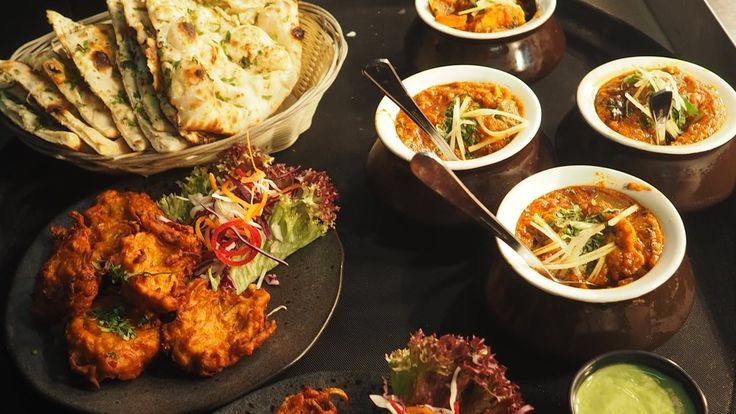The word çeciir is not commonly found in mainstream discussions, and its meaning and usage may be unfamiliar to many. However, for those who come across this term, it carries a depth of cultural, historical, and social significance. In various regions and contexts, çeciir plays a role in artistic expression, heritage preservation, and community identity. This article will explore the possible meanings of çeciir, its historical roots, and its relevance in both traditional and modern contexts. By delving into this term, we can gain a deeper understanding of its influence and the role it plays in different aspects of life.
What Is Çeciir?
At its core, çeciir refers to a specific practice, object, or concept that holds importance in certain communities, particularly in cultural and artistic circles. While the exact meaning of çeciir may vary depending on the context, the word is often associated with craftsmanship, tradition, and heritage. It may refer to a traditional craft, an art form, or even an object with historical significance, passed down through generations.
In some regions, çeciir may describe the process of creating handcrafted items such as textiles, ceramics, or intricate designs that showcase local artistry. These creations are often imbued with cultural significance, symbolizing not only the skills of the artisan but also the values and stories of the community. Therefore, çeciir represents more than just an object; it embodies cultural expression and continuity.
The Historical Roots of Çeciir
To fully appreciate the significance of çeciir, it is essential to understand its historical roots. The practice of creating çeciir has likely been passed down through generations, with each successive artisan contributing to the preservation and evolution of the craft. The methods used to create çeciir are often deeply embedded in the cultural history of a specific region or community.
Historically, çeciir may have served both functional and decorative purposes. In many cultures, traditional crafts were essential to daily life, whether in the form of clothing, tools, or objects of beauty. Over time, these objects also came to represent the identity of a community, reinforcing shared values and practices.
In the past, çeciir may have been a communal activity, with families or villages working together to create items that were used in various ceremonies or celebrations. The community aspect of çeciir is a testament to how craftsmanship and cultural traditions were intertwined. Even today, çeciir remains a living legacy that connects people to their ancestral roots.
Çeciir as a Cultural Practice

In addition to its historical significance, çeciir plays a key role in cultural practices. In many communities, çeciir is not merely about the final product but also about the process. The creation of çeciir often involves specific rituals, customs, or storytelling that enhance the value of the craft. For example, artisans may gather in communal spaces, exchanging knowledge and techniques while engaging in social bonding.
Moreover, çeciir may be closely linked to important cultural events or ceremonies. For instance, certain items made from çeciir might be reserved for weddings, religious rituals, or festivals, acting as symbols of prosperity, unity, or sacredness. In this way, çeciir transcends its material form, becoming a symbol of cultural continuity and social connection.
In some regions, the preservation of çeciir is seen as an act of cultural resistance, protecting traditional practices from the influence of globalization and mass production. By continuing to create and use çeciir, people ensure that their cultural identity remains strong and vibrant, even in the face of modern challenges.
The Artistry Behind Çeciir
The artistry involved in creating çeciir cannot be overstated. Whether it involves weaving, carving, painting, or other techniques, creating çeciir requires a high level of skill, precision, and creativity. The artisans who engage in this practice often spend years perfecting their craft, honing their techniques, and developing an intimate understanding of their materials.
Çeciir is often characterized by intricate patterns, designs, and colors that are unique to the region or culture from which it originates. These artistic elements can tell stories, express emotions, or symbolize cultural beliefs. For example, a piece of çeciir may feature geometric patterns that represent harmony and balance, or it might incorporate symbols that hold spiritual significance.
In many cases, the materials used to create çeciir are sourced from the local environment, further connecting the craft to the land and people. The use of natural fibers, clay, wood, or other indigenous materials ensures that each piece of çeciir is not only a reflection of artistic talent but also a product of the surrounding ecosystem.
Modern Relevance of Çeciir
While çeciir has deep historical and cultural significance, it continues to be relevant in the modern world. In an era of mass production and digitalization, many people are seeking to reconnect with traditional crafts as a way to preserve cultural heritage and create unique, personalized items. The demand for handmade, artisanal products has surged in recent years, as consumers increasingly value quality, craftsmanship, and authenticity.
For many artisans, the revival of çeciir represents an opportunity to share their cultural heritage with a global audience. Social media platforms, online marketplaces, and international fairs have made it possible for creators of çeciir to showcase their work to a wider audience, allowing the craft to reach beyond its traditional boundaries.
Additionally, the modern reinterpretation of çeciir by younger generations ensures its survival in an ever-changing world. Contemporary artists and designers may take inspiration from traditional çeciir designs, adding their own innovative twists and expanding the possibilities of the craft. This fusion of old and new allows çeciir to remain fresh and dynamic, appealing to both traditionalists and modern consumers alike.
Preserving the Tradition of Çeciir
The preservation of çeciir is of utmost importance, not only for its artistic value but also for its cultural significance. As the world becomes more interconnected, it is essential to protect traditional crafts like çeciir from being lost to time or overshadowed by mass-produced goods. There are several ways in which communities and individuals can contribute to the preservation of çeciir:

- Education and Training: One of the most effective ways to preserve çeciir is through education. By passing down knowledge and skills to younger generations, artisans ensure that the craft continues to thrive. Workshops, classes, and apprenticeships are great ways to teach the intricacies of çeciir to aspiring artists.
- Supporting Artisans: Supporting the artisans who create çeciir is essential for its continued existence. Purchasing handmade çeciir items, attending cultural events, and promoting the work of artisans can help ensure that the craft remains financially viable.
- Cultural Documentation: Documenting the history, techniques, and cultural context of çeciir is another important step in preserving its legacy. By recording the stories of artisans and the meanings behind their work, we can ensure that future generations understand the significance of çeciir and its place in cultural history.
Also Read Here: Consumed by Rage Weak Aura: Understanding the Impact and Solutions
Conclusion: The Enduring Legacy of Çeciir
In conclusion, çeciir is more than just a word or a craft—it’s a living, breathing tradition that connects people to their heritage, culture, and community. Whether through its role in artistic expression, cultural practices, or social identity, çeciir plays an integral part in preserving the values and stories of generations past.
As we move forward into the future, it is crucial that we continue to support and celebrate çeciir. By doing so, we help preserve not only a beautiful art form but also the cultural richness that has shaped it. The legacy of çeciir is one that deserves to be cherished and passed down, ensuring that its significance endures for generations to come.

